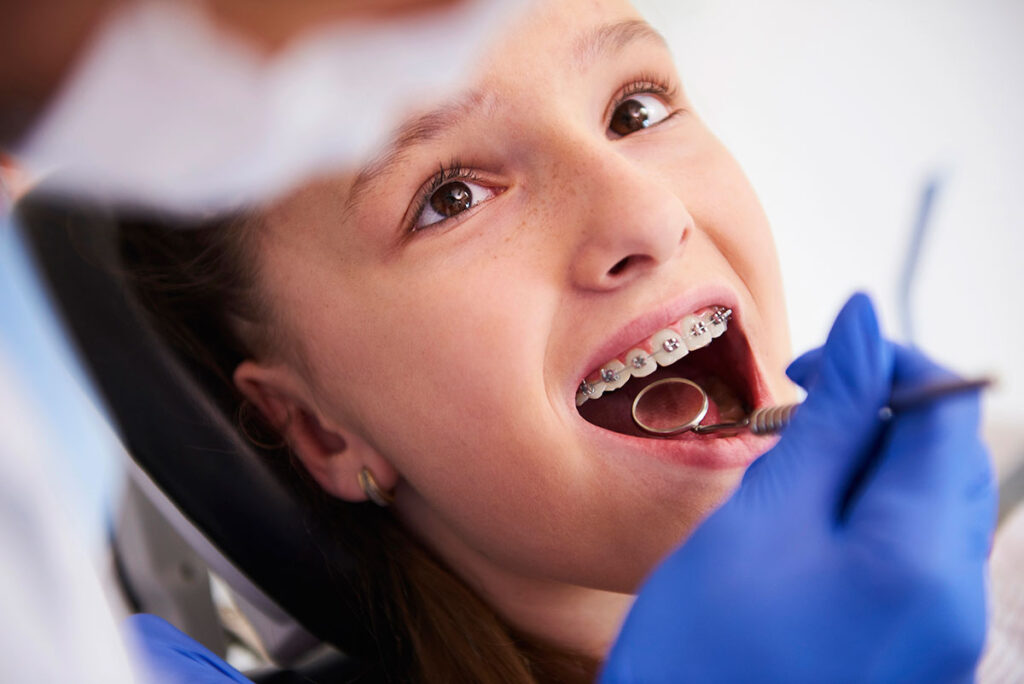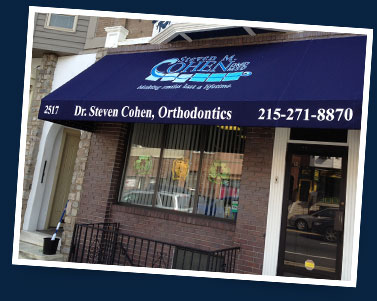7 Signs My Child Needs Pediatric Braces

Braces are practically a middle school rite of passage these days, but orthodontic issues can start way before the teenage years — which is something that a lot of parents don’t realize. According to the American Association of Orthodontists, kids should visit an orthodontist by the age of seven.
This doesn’t necessarily mean they’ll need braces right away, but an early check-up by a pediatric orthodontist could be a great way to catch potential issues and even prevent them from getting worse as your child ages.
Let’s dive right in, and take a look at some signs that your child might need pediatric braces (or another type of early orthodontic treatment) below.
Crowded Teeth
When your child’s permanent teeth start coming in, they might not have enough space to grow straight. This may cause crowding — which can push teeth sideways, cause speech issues like a lisp, or even make chewing uncomfortable. If your child’s teeth seem to be crammed together, it might be time for an orthodontic consultation.
Gaps Between Teeth
While some gaps between baby teeth are normal (these gaps will often close as permanent teeth come in), larger or persistent gaps could be a sign that your child needs pediatric braces. Major gaps can affect how teeth align and could even create some chewing challenges, so this isn’t something to ignore.
Early or Late Loss of Baby Teeth
Losing baby teeth too early can leave spaces that allow other teeth to shift. On the other hand, losing them too late might delay the eruption of permanent teeth. Either situation can lead to alignment issues (which either braces for kids or Invisalign First could fix).
Thumb Sucking
Thumb sucking or sucking on a pacifier can be very comforting for a child. However, it can also change how their permanent teeth come in. Excessive thumb sucking can lead to problems like protruding teeth and a misaligned jaw. If you’ve noticed these issues, it might be time to take your child in for an orthodontic check-up.
Mouth Breathing
Does your child breathe through their mouth instead of their nose? It might seem harmless, but mouth breathing can actually affect jaw development. For example, it can lead to a jaw that’s too narrow. This could mean pediatric braces or even a palate expander might be necessary.
Underbite
When the lower teeth stick out past the upper teeth, this is known as an underbite. This often happens because the upper jaw doesn’t grow enough or the lower jaw grows too much. Underbites can cause jaw discomfort and chewing problems, so it’s important to address this particular issue early.
Overbite
An overbite is the opposite of an underbite (when the upper teeth stick out too far over the lower teeth). This can make it difficult for your child to close their lips properly. In severe cases, it can cause mouth breathing or even speech issues. Pediatric braces can help correct this imbalance, so don’t worry.
What Age is Best for Braces?
Orthodontists recommend evaluating kids for braces around age seven, even if their teeth look fine. Early orthodontic evaluation allows for treatments like palate expanders — which can address crowding and bite issues while your child’s jaw is still developing.
If the issues are more severe or your child is older, braces might be necessary. Most kids get braces between the ages of 9 and 14, once they have several permanent teeth. However, more discreet options like Invisalign First are also available for children as young as six.
How Long Do Kids Need to Wear Braces?
The length of time braces stay on will depend on how severe the problem is and how quickly your child’s teeth adjust. Some kids need braces for just over a year, while others might need to wear them for two or more years. Your kid’s orthodontist will monitor their progress and adjust the treatment plan if necessary.
Types of Braces for Kids
If you think your kid might need to get pediatric braces in Philadelphia, you’re in the right place. When it comes to treatment for teeth and jaw alignment issues, there are a few different options to consider:
Invisalign First
These clear aligners are designed specifically for kids (even kids with a mix of baby and adult teeth). Invisalign First is a great option for younger children who might feel self-conscious about wearing traditional braces. They’re also removable, which means kids can eat and brush their teeth more comfortably.
Clear Braces
Clear braces are similar to traditional metal braces. However, they use tooth-colored or clear brackets, which means they’re less noticeable. If your child doesn’t qualify for Invisalign but still wants a more subtle option, clear braces in Philadelphia could be the way to go.
Traditional Metal Braces
The most common type of braces, metal braces, are durable and effective for fixing all sorts of orthodontic issues. Kids’ braces consist of small metal brackets bonded to the teeth and connected by wires and rubber bands. Your kid may enjoy picking out colorful rubber bands to personalize their braces.
Choosing the Right Option
With so many choices available (Invisalign First, clear braces, etc.), you and your child may feel a bit overwhelmed. This is totally understandable, and it’s one of the reasons why having an initial consultation with an orthodontist is so important.
In any case, it’s important that you don’t put off taking your kid to the orthodontist. Catching orthodontic issues early can make a huge difference — and it will probably save you a lot of time and money in the long run. It’ll also help improve your kid’s confidence, since they’ll have a straighter smile!
Conclusion
If you’ve noticed any of these signs, don’t wait to schedule a visit to a pediatric orthodontist. Early orthodontic treatment will be the best way to help your child achieve a healthy smile.
Whether you’re considering pediatric braces in Philadelphia, Invisalign First, or clear braces, getting started early is more important than you might think.








